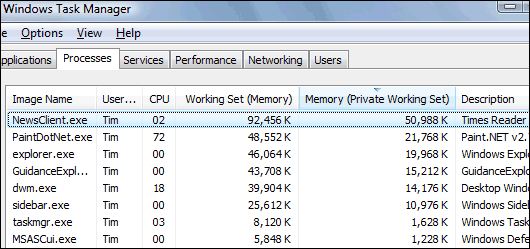Oracle has posted a strategy and roadmap (pdf) for JDeveloper, its Java IDE, and the Oracle ADF application framework. It looks like a bunch of interesting stuff is coming in JDeveloper 11, including JEE 5.0 and EJB 3.0, AJAX controls for JavaServer Faces, and “declarative validation using standard expressions or scripting languages such as Groovy”.
So full steam ahead for JDeveloper, but what about Eclipse? Oracle is a member of the Eclipse Foundation at the add-in provider level, but is sticking with JDeveloper as its primary development tool:
A question that we are often asked is “Why hasn’t Oracle implemented all of its design time features as Eclipse plug-ins?”. Given the popularity of this open source IDE, it is a valid question. However, the answer is simple. By controlling the entire development environment, we have been the ability to produce both the shell and the core architecture which allows seamless integration of all types of design time environments, all sharing the same concepts and look and feel. If we just created specific plug-ins for Eclipse, each plug-in might be very effective on its own but it might not necessarily be consistent or compatible with third-party plug-ins, and would not offer to developers the level of productivity provided by a fully integrated environment. For those developers who have already made the choice to use Eclipse, we also contribute to this platform and lead open source projects to provide standalone Eclipse plug-ins for specific technologies such as JSF, EJB 3.0 or BPEL.
This is consistent with the reasoning given when Oracle first joined Eclipse:
Oracle is joining the Eclipse board to make sure that Eclipse developers can take advantage of the Oracle deployment platform (i.e. database and application server).
In other words, Oracle does not want to lock itself out from Eclipse developers, which is just as well since Eclipse is by most counts the most popular IDE out there, while JDeveloper is maybe 3rd (after NetBeans); it used to be behind JBuilder but I doubt that is true now, with all the uncertainty around Borland’s tools. More worrying for Oracle is that some figures (BZ Research in December 2005) show its market share in steady decline, from around 25% in 2002 to 15% in 2005; I don’t much trust these figures but I don’t have better ones to hand.
Does it make sense for Oracle to persevere with JDeveloper? The argument quoted above is not the whole story. If Oracle thinks that combining plug-ins from multiple vendors in one IDE does not work, why is it the prime mover behind JSR-198, a proposed JCP standard for IDE plug-ins that is meant to enable interoperability across IDEs? I suggest this has more to do with Oracle regarding the IDE as a strategic asset. It wants full control of the tools as well as the platform (app server and database).
Personally I welcome JDeveloper in that I welcome diversity among Java IDEs, and last time I looked at it I was impressed with its quality. At the same time, I’m not convinced that there is any really good reason why Oracle should not embrace either Eclipse or Netbeans rather than continuing to go it alone. Despite its strong features, I doubt JDeveloper will attract much usage beyond Oracle shops, given the excellence of the open-source alternatives.
One final thought: the new Eclipse-based JBuilder will have to be extraordinarily good to succeed in this crowded market.
Tags: oracle java jdeveloper eclipse netbeans
